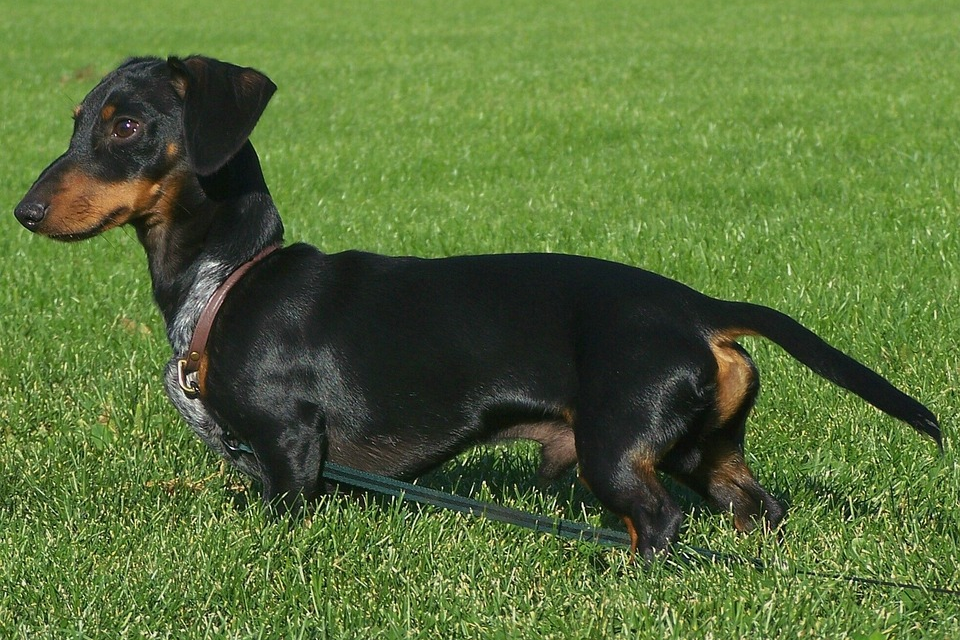Miniature Dachshunds are cute and cuddly little creatures that make great companions for their owners. However, like all dogs, they require regular exercise to maintain good health and prevent obesity-related health problems. Walking is one of the simplest and most effective ways to provide exercise for your mini dachshund, but how far can they really walk?
The answer to this question is not straightforward, as many factors can affect a mini dachshund’s walking distance, such as age, health, and breed characteristics. In this blog post, we will explore the factors that affect a mini dachshund’s walking distance and provide recommendations for how much walking is appropriate based on their age and health status. We will also offer tips on how to prepare and equip your mini dachshund for walking, as well as alternatives to walking for those who may have mobility issues.
Whether you are a seasoned mini dachshund owner or considering adopting one, this post will provide valuable insights on how to keep your furry friend happy, healthy, and active.
Key Takeaways:
- Mini dachshunds have unique exercise needs, and their walking distance should be gradually increased.
- Preparing your mini dachshund for walks involves proper training, gear, and hydration.
- Alternatives to walking, such as indoor exercises and mental stimulation, can also benefit mini dachshunds.
Factors affecting mini dachshunds’ walking distance
Mini dachshunds have different exercise needs compared to other dog breeds. Their long, sausage-shaped bodies, short legs, and low-to-the-ground stature make them prone to back problems and other health issues. As such, it is important to be aware of the factors that can affect their walking distance.
Age
Age is a significant factor in determining how far a mini dachshund can walk. Younger dogs tend to have more energy and can walk longer distances than older ones. As dogs age, they may experience joint problems and other age-related issues that can limit their walking ability. For instance, senior dachshunds may require shorter, more frequent walks to avoid overexertion and joint pain.
Health and fitness level
Mini dachshunds that are overweight or have pre-existing health conditions may not be able to walk as far as healthy ones. Obese dogs can develop joint problems, breathing difficulties, and other health problems that make it challenging for them to walk long distances. Similarly, dogs with pre-existing medical conditions such as heart disease, arthritis, or respiratory problems may require shorter, less strenuous walks.
Breed characteristics
Miniature dachshunds are a small breed with a unique body shape that can affect their walking distance. Their short legs and long backs can put them at risk of spinal injuries and other health problems. As such, they may require shorter, more frequent walks to avoid overexertion and back problems.
Weather conditions
Extreme weather conditions can affect a mini dachshund’s ability to walk. High temperatures can cause heatstroke and dehydration, while cold temperatures can lead to hypothermia and other health problems. It is important to avoid walking your mini dachshund during extreme weather conditions and to adjust their walking distance accordingly.
In summary, various factors can impact a mini dachshund’s walking distance. Age, health, breed characteristics, and weather conditions are all significant factors to consider when planning a walking routine for your furry friend. By being aware of these factors and taking steps to adjust your walking routine accordingly, you can ensure that your mini dachshund stays healthy, happy, and active.
Recommended walking distance for mini dachshunds
Now that we’ve discussed the factors that can affect a mini dachshund’s walking distance, let’s take a closer look at how much exercise they need. It’s important to strike a balance between providing enough exercise to keep your dog healthy and active, and not overexerting them and putting their health at risk.
The American Kennel Club recommends that mini dachshunds get at least 30 minutes of exercise each day, broken up into two or three short walks. However, it’s important to note that this is just a guideline, and the actual amount of exercise your dog needs may vary depending on their age, health, and fitness level.
For instance, younger, more active dachshunds may require more exercise than older, less active ones. Similarly, dogs with health conditions or joint problems may require shorter, less strenuous walks to avoid aggravating their condition.
It’s also important to take your mini dachshund’s personality and preferences into account when planning their exercise routine. Some dogs may prefer short, leisurely walks around the block, while others may enjoy longer, more strenuous walks in the park.
In addition to walking, there are other ways to provide exercise and mental stimulation for your mini dachshund. Playing fetch, running up and down stairs, and swimming are all great ways to keep your dog active and engaged.
Preparing mini dachshunds for walking
Before taking your mini dachshund for a walk, it’s important to make sure they are prepared and ready for the activity. Here are some tips on how to prepare your mini dachshund for a walk:
Warm-up exercises
- Just like humans, dogs also need to warm up before any physical activity.
- You can start by walking your mini dachshund around the house or yard to get them moving.
- You can also do some gentle stretching exercises by gently massaging their legs and paws.
Proper gear
- Make sure your mini dachshund is wearing a well-fitting harness, rather than a collar, to avoid any strain on their neck.
- A leash is also necessary to keep your dog safe and under control during the walk.
- Comfortable walking shoes are also important for the owner, especially if planning on walking on rough or rocky terrain.
Hydration and snacks
- Bring water for both you and your mini dachshund, especially during hot weather or long walks.
- Bring snacks for your mini dachshund, but avoid giving them too much before or during the walk to prevent stomach upset.
Safety
- Always keep your mini dachshund on a leash, even if they are well-trained.
- Check the weather forecast before the walk to avoid extreme weather conditions such as high heat or extreme cold.
- Be aware of your surroundings and avoid busy or congested areas where your mini dachshund might feel overwhelmed.
Training
- Training your mini dachshund to walk on a leash and to follow basic commands is crucial for their safety and enjoyment during the walk.
- Start by training your mini dachshund in a quiet and familiar environment, gradually introducing them to different sounds and distractions.
By following these preparation tips, you can ensure a safe and enjoyable walking experience for both you and your mini dachshund.
Tips for walking mini dachshunds
Walking your mini dachshund can be a fun and healthy activity for both you and your furry friend. Here are some tips to help you make the most of your walks together:
- Use a harness: A harness is a better option than a collar for a dachshund because it distributes the pressure evenly across their chest, rather than putting pressure on their neck. This is important because dachshunds are prone to neck injuries.
- Stay on flat ground: Mini dachshunds have short legs and a long back, which makes them more prone to back injuries. Therefore, it’s best to avoid steep inclines or uneven surfaces during walks.
- Start slow: If your mini dachshund is not used to walking long distances, start with short walks and gradually increase the distance over time. This will help them build up their endurance and avoid injury.
- Bring water: Dachshunds can get dehydrated quickly, especially on hot days, so be sure to bring water for them to drink during your walks.
- Watch for signs of fatigue: Pay attention to your dachshund’s behavior during walks. If they start to lag behind or seem tired, it’s time to take a break or end the walk.
- Avoid jumping: Dachshunds are not built for jumping, and doing so can put a lot of pressure on their backs. Be sure to avoid activities that involve jumping or hopping.
- Take breaks: Just like humans, dachshunds need breaks during walks. Stop to rest and give your dachshund a chance to catch their breath and relax.
By following these tips, you can ensure that your mini dachshund stays healthy and happy during your walks together. Remember, the most important thing is to have fun and enjoy the time you spend together.
Related: How Often Should You Walk a Miniature Dachshund?
Alternatives to walking for mini dachshunds
While walking is a great way to keep your mini dachshund active, it may not always be feasible or suitable for every dog. Here are some alternative activities that you can try with your mini dachshund:
- Swimming: Swimming is a low-impact exercise that is great for dogs with joint problems or mobility issues. Mini dachshunds are known for their love of water, so take advantage of this and introduce them to a pool or a shallow body of water.
- Indoor games: When the weather is not suitable for outdoor activities, or if you do not have access to a yard, there are many indoor games that you can play with your mini dachshund. Fetch, hide and seek, and tug-of-war are all great games that can help to keep your dog active and engaged.
- Interactive toys: Interactive toys are a great way to keep your mini dachshund mentally stimulated and physically active. Toys such as puzzle feeders and treat-dispensing toys can keep your dog occupied for hours, and help to prevent boredom and destructive behaviors.
- Dog parks: If your mini dachshund gets along well with other dogs, a visit to the dog park can be a great way to provide socialization and exercise. Make sure that your dog is up-to-date on vaccinations and that they are well-behaved before taking them to a dog park.
- Agility training: Agility training is a fun and challenging way to keep your mini dachshund active and engaged. It involves a series of obstacles that your dog must navigate through, such as jumps, tunnels, and weave poles. Not only does it provide physical exercise, but it also helps to improve your dog’s coordination and obedience.
It is important to note that these activities should be tailored to your mini dachshund’s individual needs and abilities. Always consult with your veterinarian before starting any new exercise program, and monitor your dog closely for signs of discomfort or fatigue. With a little creativity and some patience, you can find alternative activities that your mini dachshund will love.
Conclusion
In conclusion, walking is an excellent exercise for Mini Dachshunds, as long as it is done safely and appropriately. The recommended walking distance for Mini Dachshunds is between 15 to 30 minutes per day, divided into several short walks throughout the day. However, several factors can affect the walking distance for Mini Dachshunds, such as age, weight, health condition, and weather. Therefore, it is essential to consult with a veterinarian to determine the appropriate walking distance for your Mini Dachshund.
Preparing Mini Dachshunds for walking involves making sure they are adequately hydrated, fed, and rested before going on a walk. It is also important to use a harness instead of a collar to avoid any potential injuries or choking hazards. While walking your Mini Dachshund, make sure to pay attention to their behavior and adjust the walking distance and pace accordingly.
In addition to walking, there are also alternative exercises that Mini Dachshunds can engage in, such as swimming and playing games that stimulate their natural instincts. Remember to always prioritize your Mini Dachshund’s safety and well-being when it comes to exercise and physical activity.
Overall, walking and exercise are essential for Mini Dachshunds to maintain a healthy lifestyle and prevent health problems. By following the recommended walking distance and preparing your Mini Dachshund appropriately, you can enjoy a safe and enjoyable walk with your furry friend.

